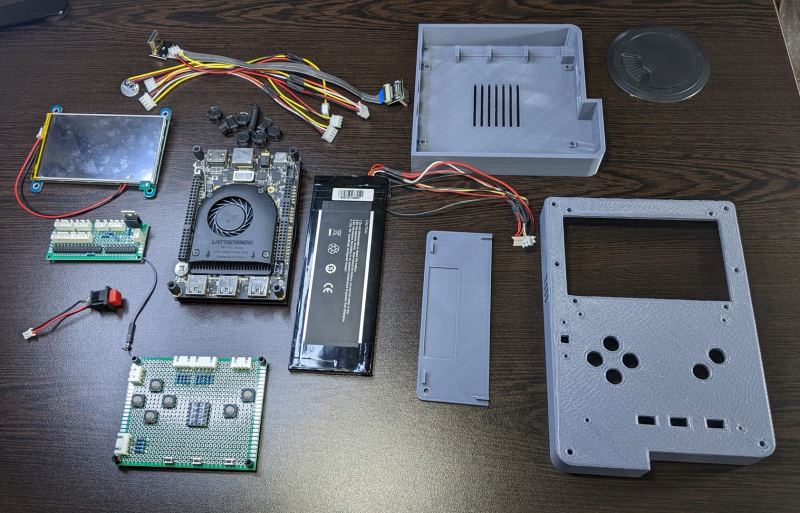While mobile gaming has largely moved to smartphones these days, the classic Game Boy remains a hugely popular platform for retro enthusiasts, owing in no small part to its enormous library of quality games. The original Game Boy hardware is pretty much bulletproof, but feels a bit outdated today because it lacks modern conveniences like a large, backlit display or a rechargeable battery.
[iketsj] wanted to build a modern take on the Game Boy design and designed what’s in effect a 3D-printed, oversized copy of the classic handheld powered by a modern single-board computer. Most people would have gone for something obvious like a Raspberry Pi running Linux, but not [Ike]: he decided to go for a LattePanda Alpha board and run macOS Monterey on it. That makes this a Hackintosh, and probably one of the last ones as well since Apple is busy migrating all of its products onto its own proprietary CPUs.
The LattePanda also has an Arduino integrated on its board, which is used to read out the Game Boy’s buttons as well as the resistive touch screen. It communicates with the macOS system through a Python script that emulates mouse movements and keypresses. Sadly, the touch function is not working because [Ike] accidentally damaged the touch-sensitive system while trying to slim down the display module. Still, the seven pushbuttons are more than enough when running a Game Boy emulator, and there’s also a USB connector available to connect external peripherals like a keyboard, mouse or monitor.
We’ve seen several great Game Boy projects over the years: some made from brass, some very wide, and some that stuff modern computing platforms inside an original Game Boy case. Combining a Game Boy with a Hackintosh is definitely a new development, though it matches well with [Ike]’s history of unusual Hackintosh designs.















Once the M1 Macbooks start hitting scrap piles, we may see some very interesting hacks. The motherboard is pretty tiny so it could fit many kinds of devices, with display connected through USB-C.
As soon as their soldered in flash drives start failing I looking forward to seeing someone desolder the M1 and put on board with a PCI controller. Or maybe I’ll just make a board with sockets and stick in the empty drive bay of my MacPro classic.
The iCloud lock will have to be broken. Right now it’s impossible to even wipe and reload an M1 device without the original owner either removing it from iCloud or logging in to the device during the process. Unfortunately retired M1 devices are mostly going to do nothing but increase the mass of our landfills, unless by some miracle they get recycled.